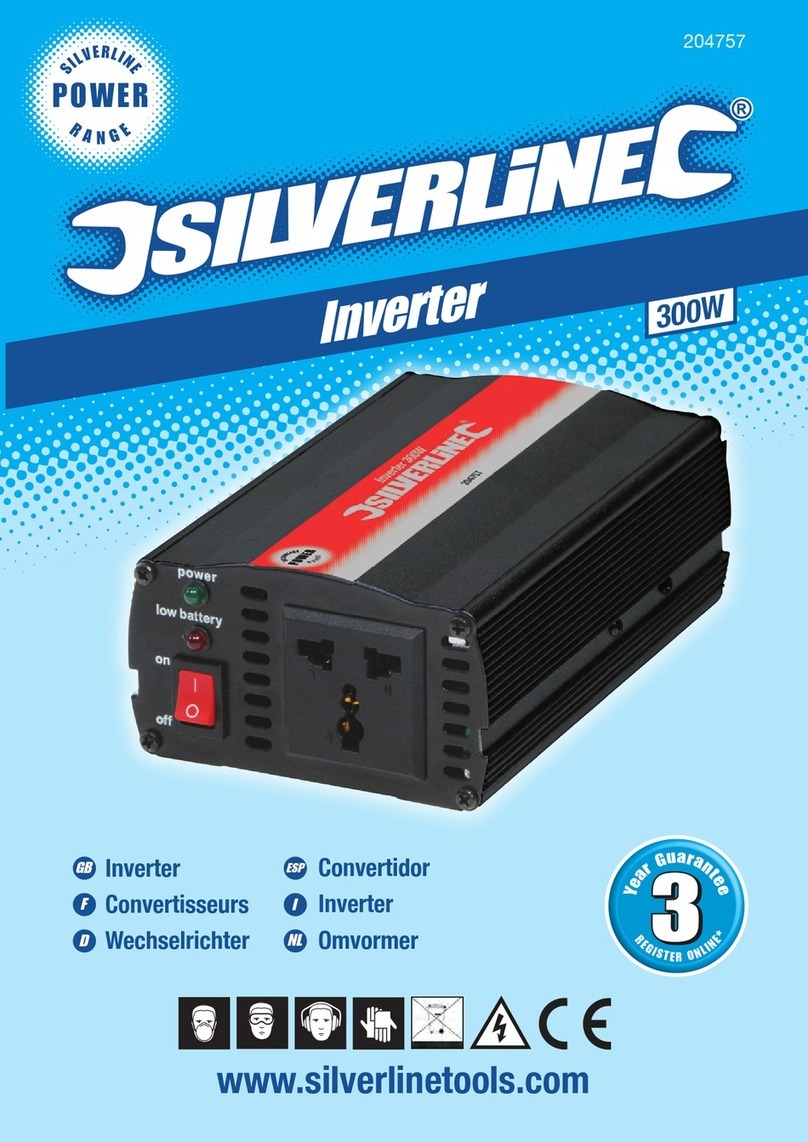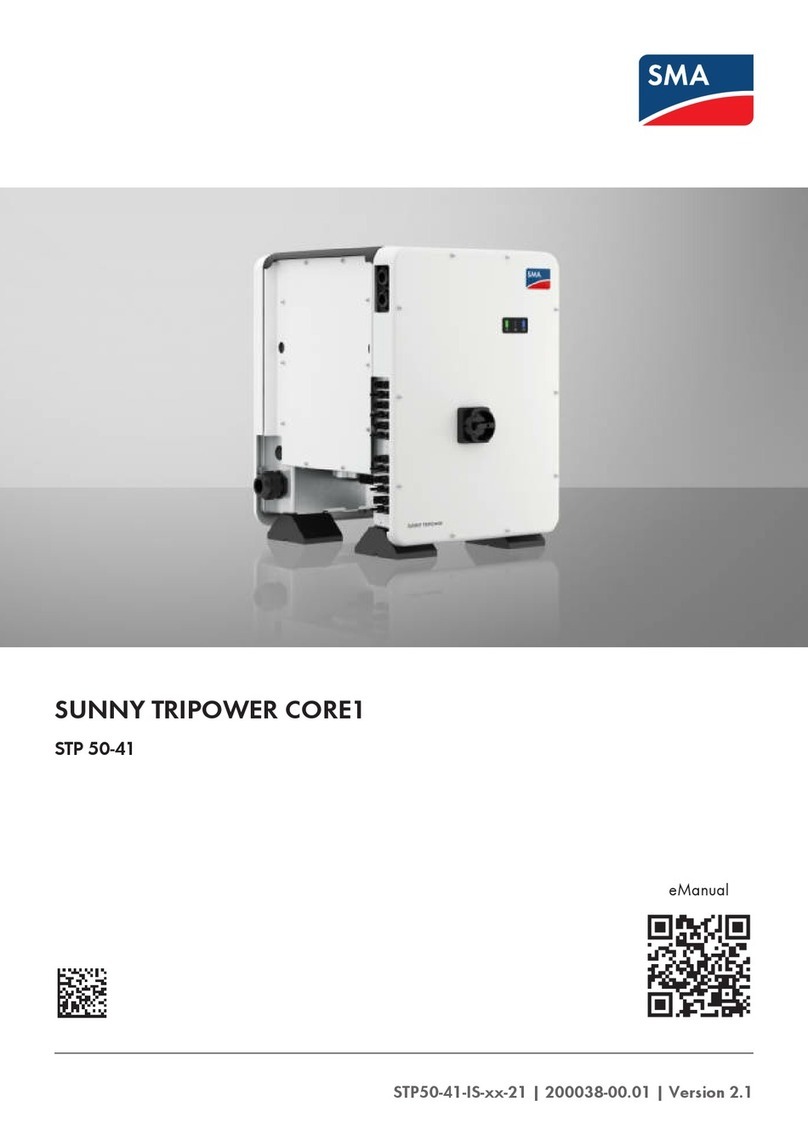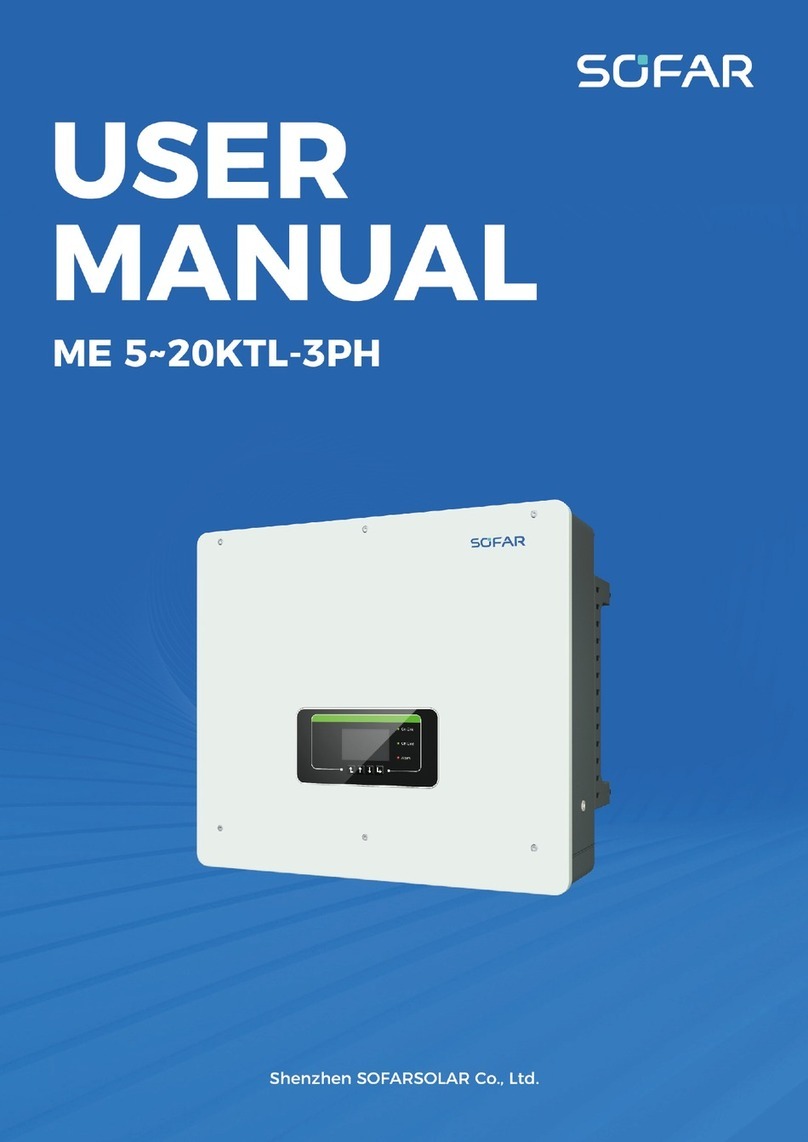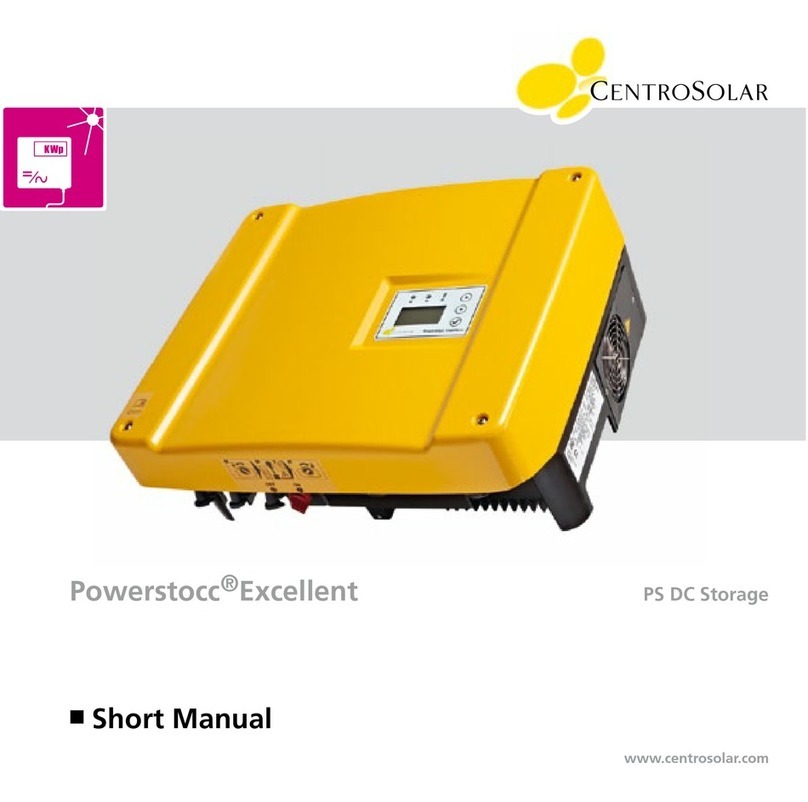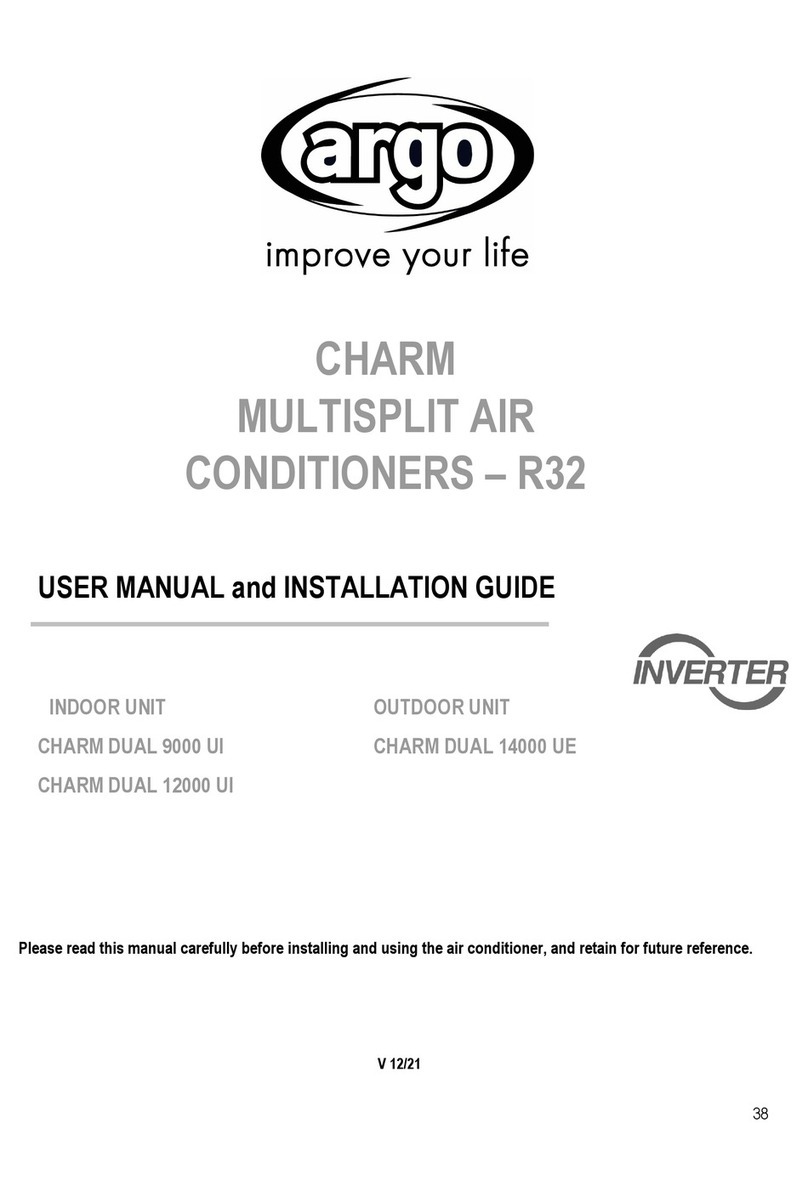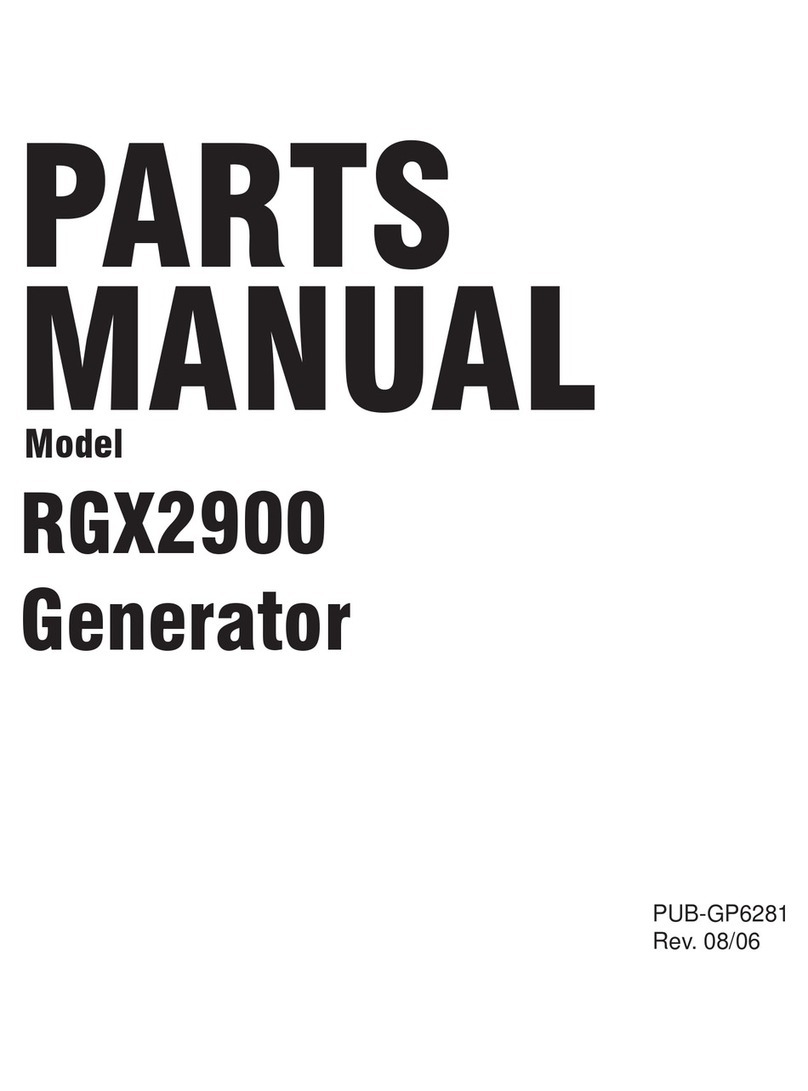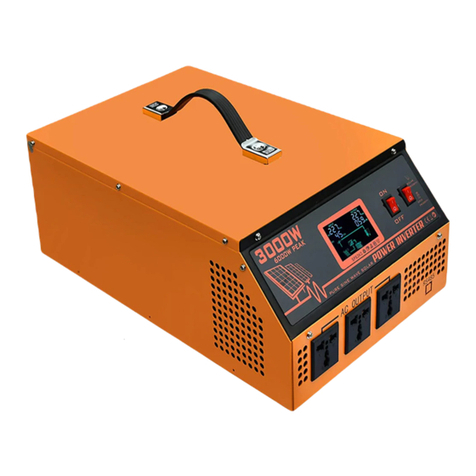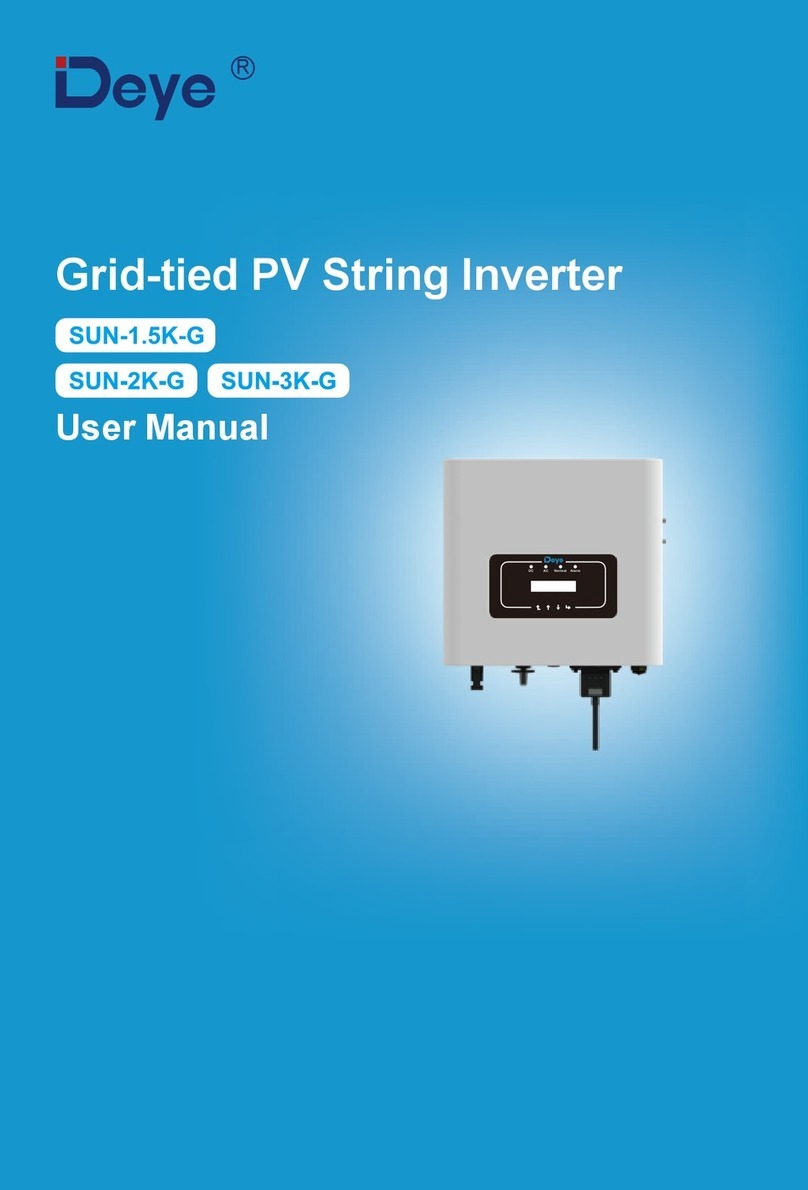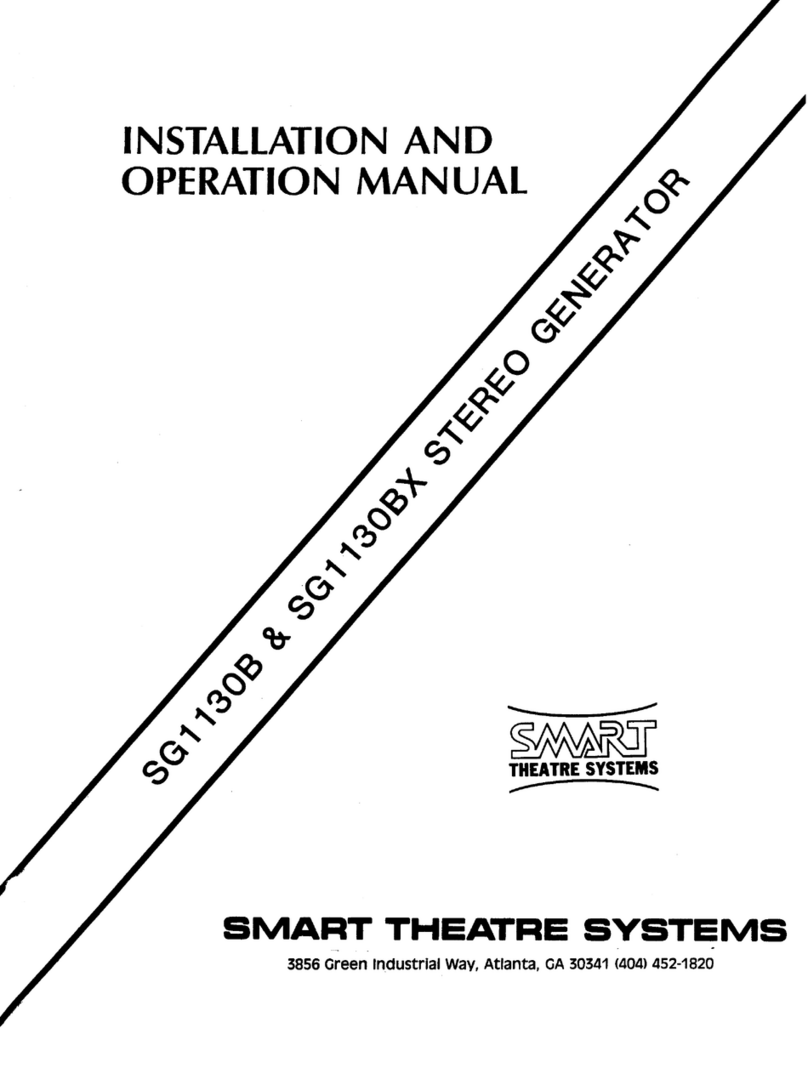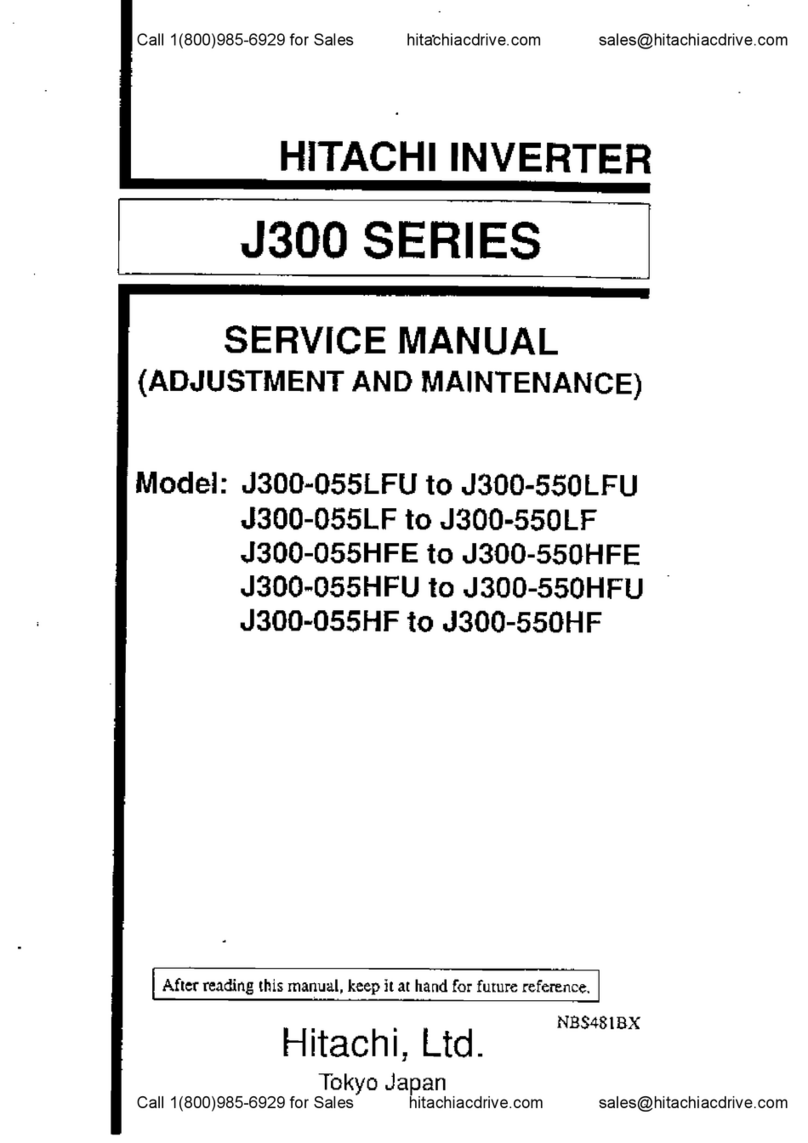Thunder Scientific series 3900 User manual

OPERATION AND MAINTENANCE MANUAL
LOW HUMIDITY GENERATOR
SERIES 3900
®

SERIES 3900
LOW HUMIDITY GENERATOR
OPERATION AND
MAINTENANCE MANUAL
Copyright © 1993-2017
THUNDER SCIENTIFIC CORPORATION
623 WYOMING BLVD. SE
ALBUQUERQUE, NEW MEXICO 87123-3198
www.thunderscientific.com
Printed 2017
Tel: 505.265.8701 FAX: 505.266.6203
Document Edition 15 September 2017
Firmware Version 2.12
THUNDER SCIENTIFIC® is the registered trademark of Thunder Scientific Corporation.
All the information provided in this document is correct and true at the time of publication.
Thunder Scientific Corporation reserves the right to change any technical data without notice.
MADE IN USA

Model 3900 Low Humidity Generator

i
TABLE OF CONTENTS
Section 1 - GENERAL INFORMATION
List of Reference Drawings - iv
Warranty
1.1 INTRODUCTION ---------------------------------------------------------------- 1-1
1.2 PRINCIPLE OF OPERATION ------------------------------------------------- 1-1
1.2.1 General Description--------------------------------------------------------- 1-1
1.2.2 Humidity Formulas --------------------------------------------------------- 1-1
1.2.2.1 Saturation Vapor Pressure, e----------------------------------------- 1-2
1.2.2.2 Enhancement Factor, ƒ ----------------------------------------------- 1-3
1.2.2.3 Frost Point -------------------------------------------------------------- 1-4
1.2.2.4 Dew Point -------------------------------------------------------------- 1-5
1.2.2.5 Parts Per Million by Volume, PPMv ------------------------------- 1-5
1.2.2.6 Parts Per Million by Weight, PPMw ------------------------------- 1-6
1.2.2.7 Relative Humidity, %RH--------------------------------------------- 1-6
1.3 SPECIFICATIONS --------------------------------------------------------------- 1-7
1.3.1 Facility Requirements ------------------------------------------------------ 1-7
1.3.2 Environmental --------------------------------------------------------------- 1-7
1.4 COMPUTER/CONTROL SYSTEM ------------------------------------------ 1-8
1.4.1 General Description--------------------------------------------------------- 1-8
1.4.2 Computer/Control System Configuration ------------------------------- 1-8
1.4.2.1 Central Processing Unit (CPU)-------------------------------------- 1-8
1.4.2.2 Liquid Crystal Display (LCD) --------------------------------------- 1-9
1.4.2.3 Liquid Crystal Display Driver --------------------------------------- 1-9
1.4.2.4 Keypad ------------------------------------------------------------------ 1-9
1.4.2.5 Memory Card ---------------------------------------------------------- 1-9
1.4.2.6 Analog to Digital Converter (A/D) --------------------------------- 1-9
1.5 ELECTRICAL SYSTEM-------------------------------------------------------1-10
1.5.1 AC Power Distribution ----------------------------------------------------1-10
1.5.2 Power Supply ±15, +5 VDC----------------------------------------------1-10
1.5.3 Power Supply +24 VDC --------------------------------------------------1-10
1.5.4 Analog Inputs ---------------------------------------------------------------1-11
1.5.4.1 Temperature Measurement------------------------------------------1-11
1.5.4.2 Test Pressure Transducer--------------------------------------------1-11
1.5.4.3 Low Range Saturation Pressure Transducer ----------------------1-12
1.5.4.4 High Range Saturation Pressure Transducer ---------------------1-12
1.5.4.5 Gas Supply Pressure Transducer -----------------------------------1-12
1.5.4.6 Mass Flow Meter -----------------------------------------------------1-12
1.5.5 Control Logic ---------------------------------------------------------------1-13
1.5.5.1 Gas Supply Solenoid Valve -----------------------------------------1-13
1.5.5.2 Fluid Pump Purge Solenoid Valve---------------------------------1-13

ii
1.5.5.3 Saturator Vent/Purge Solenoid Valve----------------------------- 1-13
1.5.5.4 Pressure Select Solenoid Valve ------------------------------------ 1-13
1.5.5.5 Saturator Refrigerant Solenoid Valve----------------------------- 1-14
1.5.5.6 Saturator Inlet/Outlet Heater --------------------------------------- 1-14
1.5.5.7 Saturator Fluid Heater ----------------------------------------------- 1-14
1.5.5.8 Saturator Fluid Circulation Pump --------------------------------- 1-14
1.5.5.9 Saturator Refrigeration Compressors ----------------------------- 1-14
1.5.5.10 Flow Control Valve ------------------------------------------------------- 1-15
1.5.5.11 Expansion Valve----------------------------------------------------------- 1-15
1.5.5.12 Expansion Valve Heater -------------------------------------------------- 1-15
1.6 PNEUMATIC SYSTEM ------------------------------------------------------- 1-16
1.7 FLUID SYSTEMS -------------------------------------------------------------- 1-16
1.7.1 Saturator Fluid Systems--------------------------------------------------- 1-16
1.8 REFRIGERATION ------------------------------------------------------------- 1-17
1.8.1 Saturator Refrigeration---------------------------------------------------- 1-17
Section 2 - INSTALLATION
2.1 GENERAL -------------------------------------------------------------------------2-1
2.2 FACILITIES REQUIRED -------------------------------------------------------2-1
2.2.1 Floor Space -------------------------------------------------------------------2-1
2.2.2 Power --------------------------------------------------------------------------2-1
2.2.3 Gas Supply--------------------------------------------------------------------2-1
2.3 PREPARATION ------------------------------------------------------------------2-1
2.3.1 Methanol Filling Procedure ------------------------------------------------2-2
2.3.2 Vent Muffler------------------------------------------------------------------2-3
2.4 POSITIONING AND LEVELING ---------------------------------------------2-3
2.5 FACILITY CONNECTIONS----------------------------------------------------2-3
2.5.1 Gas Supply--------------------------------------------------------------------2-3
2.5.2 Pressure Vent-----------------------------------------------------------------2-3
2.5.3 AC Power ---------------------------------------------------------------------2-3
Section 3 - OPERATION
3.1 GENERAL -------------------------------------------------------------------------3-1
3.2 STANDARD OPERATING PROCEDURES --------------------------------3-1
3.2.1 Power-Up ---------------------------------------------------------------------3-1
3.2.2 Control/Display Screen -----------------------------------------------------3-1
3.2.2.1 Changing the Display Contrast --------------------------------------------3-3
3.2.3 Changing Setpoints----------------------------------------------------------3-4
3.2.3.1 Example Setpoint Change --------------------------------------------3-5
3.2.4 Control Modes ---------------------------------------------------------------3-7
3.2.4.1 Changing Control Mode ----------------------------------------------3-8
3.2.5 Purging ---------------------------------------------------------------------- 3-10

iii
3.2.5.1 Purging Procedure----------------------------------------------------3-11
3.2.6 Saturator Clear--------------------------------------------------------------3-12
3.2.6.1 Saturator Clear Procedure -------------------------------------------3-12
3.2.7 Generating-------------------------------------------------------------------3-13
3.2.7.1 Generating Procedure ------------------------------------------------3-14
3.2.7.2 Example Instrument Set-up -----------------------------------------3-15
3.2.8 Saturator Fill ----------------------------------------------------------------3-16
3.2.8.1 Saturator Fill Procedure ---------------------------------------------3-16
3.2.9 Stopping ---------------------------------------------------------------------3-18
3.2.10 Shutdown--------------------------------------------------------------------3-19
3.2.11 Changing Gas Supply------------------------------------------------------3-19
3.2.12 Printer (optional) -----------------------------------------------------------3-19
3.3 EDITING SYSTEM COEFFICIENTS AND PARAMETERS ----------3-20
3.3.1 Edit Mode -------------------------------------------------------------------3-20
3.3.2 Coefficients and Parameters ----------------------------------------------3-22
3.3.2.1 Temperature Coefficients -------------------------------------------3-22
3.3.2.2 Reference Resistor Coefficients ------------------------------------3-23
3.3.2.3 Pressure Coefficients-------------------------------------------------3-23
3.3.2.4 Flow Coefficients-----------------------------------------------------3-24
3.3.2.5 Console Port Parameters --------------------------------------------3-25
3.3.2.6 Printer Port Parameters ----------------------------------------------3-26
3.3.2.7 Time and Date --------------------------------------------------------3-26
3.3.2.8 Miscellaneous User Parameters ------------------------------------3-27
Section 4 - CALIBRATION AND MAINTENANCE
4.1 GENERAL ------------------------------------------------------------------------ 4-1
4.2 CALIBRATION ------------------------------------------------------------------ 4-1
4.2.1 A/D Card --------------------------------------------------------------------- 4-2
4.2.2 Temperature Calibration --------------------------------------------------- 4-2
4.2.2.1 Test Temperature Calibration Procedure--------------------------- 4-3
4.2.2.2 Saturation Temperature Calibration -------------------------------- 4-7
4.2.3 Pressure Transducer Calibration -----------------------------------------4-11
4.2.3.1 Saturator and Test Pressure Calibration Procedure--------------4-12
4.2.3.2 Supply Pressure Transducer Calibration --------------------------4-16
4.2.4 Flow Meter Calibration ---------------------------------------------------4-18
4.2.4.1 Flow Calibration Procedure-----------------------------------------4-18
4.2.5 Printing Condensed Coefficient Report---------------------------------4-22
4.3 ROUTINE MAINTENANCE--------------------------------------------------4-23
4.3.1 Console Intake: Monthly --------------------------------------------------4-23
4.3.2 7 Micron Gas Input Filter: Yearly ---------------------------------------4-23
4.4 SERVICING REFRIGERATION AND FLUID SYSTEMS--------------4-24
4.4.1 Fault Isolation and Diagnosis---------------------------------------------4-24
4.4.1.1 Moisture In Low Stage-----------------------------------------------4-24
4.4.1.2 Oil In Low Stage Evaporator ---------------------------------------4-25

iv
4.4.2 Refrigerant Charge -------------------------------------------------------- 4-25
4.4.3 Saturator Fluid System---------------------------------------------------- 4-25
4.4.4 Methanol System Drain/Fill Procedure--------------------------------- 4-25
4.5 ERROR CODES AND TROUBLESHOOTING --------------------------- 4-27
Section 5 - PARTS LIST
5.1 3900 PARTS LIST ----------------------------------------------------------------5-1
LIST OF REFERENCE DRAWINGS
DRAWING # DRAWING TITLE
94D39901 -------------------------Mechanical/ Utility
95D39902 -------------------------Component Locations
95D39903 -------------------------Card Cage and Card Locations
95D39904 -------------------------3900 Bus Diagram
95D39905 -------------------------Electrical Sub-Panel Layout
95S39906 --------------------------Terminal Layout
95S39907 --------------------------AC/DC Power Schematic
95S39908 --------------------------Solid State Relay Module Board
95S39909 --------------------------Compressor / Heater / Alarm Schematic
95S39910 --------------------------Flow Valve Drive Schematic
95S39911 --------------------------Expansion Valve Drive Schematic
95S39912 --------------------------Temperature Probe / Transducer Schematic
95S39913 --------------------------Display Block Diagram
95D39914 -------------------------RS-232C Console / Printer
95S39915 --------------------------Pneumatic System (Generate Mode)
95S39916 --------------------------Pneumatic System (Purge Mode)
95S39917 --------------------------Refrig And Fluid Flow - Saturator
95S39918 --------------------------Test Temp/Test Press Xducer Schematic
08S39921 --------------------------3900 Card Cage Schematic
08D39922 -------------------------Methanol Fill Level Drawing
15A39504 -------------------------4-Port Sample Cell Manifold

WARRANTY
Thunder Scientific Corporation (TSC) warrants, to the Buyer, the Product
manufactured by TSC to be free of defects in material and workmanship
under normal use and service and to be free from inadequate mechanical
design when operated within the specified design limitations for a period
of one year from date of acceptance. TSC's obligation under this warranty
shall be limited to the following: the Product is returned to TSC with
transportation charges prepaid and that TSC's examination reveals the
Product to be defective. TSC, at its option, shall either refund to the Buyer
the purchase price of the product or repair or replace at TSC's plant, any
part or parts of the Product which is or are defective. This warranty shall
not apply to any Product which has been maintained, handled, stored,
repaired or altered in any manner, or by anyone other than an authorized
TSC representative, so as to affect adversely such Product or which has
been subject to improper installation, misuse, negligence, accident or
corrosion. THIS WARRANTY IS EXCLUSIVE AND IN LIEU OF ANY
WARRANTY OF MERCHANTABILITY, FITNESS FOR A
PARTICULAR PURPOSE OR ANY OTHER WARRANTY, WHETHER
EXPRESS OR IMPLIED, AND ALL OTHER LIABILITIES AND
OBLIGATIONS ON THE PART OF TSC; TSC SHALL NOT BE
LIABLE FOR ANY OTHER CLAIMS OR DAMAGES, EITHER
DIRECT OR CONSEQUENTIAL, ARISING DIRECTLY OR
INDIRECTLY OUT OF SUPPLYING THE PRODUCT. All warranties,
express or implied, with respect to any device or component not
manufactured by TSC but incorporated into its Product are the
responsibility of the original manufacturer and shall not affect or apply to
TSC.

Thunder Scientific®
Corporation
Thunder Scientific Corporation Web: www.thunderscientific.com
623 Wyoming Blvd. SE E-mail: support@thunderscientific.com
Albuquerque, NM 87123 Phone: 1-800-872-7728
3900 Item Check List
1. Certificate of Calibration (In Manual)
2. Operation and Maintenance Manual
3. HumiCalc® with Uncertainty Software
4. 3900 ControLog® Software
5. 5/32” Ball Driver Tool
6. Power Cable
7. Transducer Test Pressure Cable
8. Test Temp Cable
9. Printer Cable
10. Computer IO Control Cable
11. Pure Water Fill Funnel
12. 1/4” 30 Micron Muffler
13. Pressure Transducer 0 – 50 Psi
14. 1/4” Swage x 9/16” – 18 STD

PN 2566073, 1/2006
Tämä tuote noudattaa WEEE-direktiivin (2002/96/EY)
merkintävaatimuksia. Kiinnitetty etiketti osoittaa, että tätä
sähkö-/elektroniikkalaitetta ei saa hävittää kotitalousjätteissä.
Tuoteluokka: Viitaten WEEE-direktiivin liitteessä I mainittuihin
laitteisiin, tämä tuote on luokiteltu luokan 9 “Tarkkailu- ja
ohjauslaitteet” -tuotteeksi.
Ei saa heittää kotitalousjätteiden mukana!
Palauta tarpeettomat tuotteet ottamalla yhteyttä valmistajan
websivustoon, joka mainitaan tuotteessa tai paikalliseen
myyntitoimistoon tai jakelijaan.
Suomi
Dette produkt er i overensstemmelse med kravene om afmærkning
i WEEE-direktivet (2002/96/EC). Det påhæftede mærkat angiver,
at du ikke må bortskaffe dette elektriske/elektroniske produkt via
husholdningsaffald.
Produktkategori: Med reference til kravene i WEEE-direktivets
bilag I klassificeres dette produkt som et produkt til “overvågning
og kontrolinstrumentering” i kategori 9.
MÂ ikke bortskaffes via husholdningsaffald!
Hvis du vil returnere uønskede produkter, skal du besøge
producentens websted, som vises på produktet, eller den lokale
forhandler eller distributør.
Dansk
This product complies with the WEEE Directive (2002/96/EC) marking
requirements. The affixed label indicates that you must not discard
this electrical/electronic product in domestic household waste.
Product Category: With reference to the equipment types in the
WEEE Directive Annex I, this product is classed as category 9
“Monitoring and Control Instrumentation” product.
Do not dispose in domestic household waste!
To return unwanted products, contact the manufacturer’s web site
shown on the product or your local sales office or distributor.
English
Ce produit est conforme aux normes de marquage de la directive
DEEE (2002/96/CE). La présence de cette étiquette indique que
cet appareil électrique/électronique ne doit pas être mis au rebut
avec les déchets ménagers.
Catégorie de EEE : Cet appareil est classé comme catégorie 9 parmi
les « instruments de surveillance et de contrôle » en référence aux
types d’équipements mentionnés dans l’Annexe I de la directive DEEE.
Ne pas éliminer avec les autres déchets ménagers !
Pour renvoyer les produits indésirables, contacter le site Web du
fabricant mentionné sur le produit, ou son distributeur ou bureau de
ventes local.
Français
Este producto cumple la Directiva WEEE (2002/96/EC) sobre
requisitos de las marcas. La etiqueta que lleva pegada indica
que no debe desechar este producto eléctrico o electrónico con
los residuos domésticos.
Categoría del producto: con referencia a los tipos de equipo
del anexo I de la Directiva WEEE, este producto está clasificado
como categoría 9 de “Instrumentación de supervisión y control”.
¡No lo deseche con los residuos domésticos!
Para devolver productos que no desee, póngase en contacto con
el sitio Web del fabricante mostrado en el producto, o con la oficina
de ventas o distribuidor local.
Español

Dieses Produkt stimmt mit den Kennzeichnungsanforderungen
der WEEE-Richtlinie (2002/96/EC) überein. Das angebrachte
Etikett weist darauf hin, dass dieses elektrische/elektronische
Produkt nicht in Hausmüll entsorgt werden darf.
Produktkategorie: In Bezug auf die Gerätetypen in Anhang
I der WEEE-Richtlinie ist dieses Produkt als Kategorie 9
“Überwachungs- und Kontrollinstrument” klassifiziert.
Nicht in Hausmüll entsorgen!
Zur Rückgabe von unerwünschten Produkten die auf dem
Produkt angegebene Website des Herstellers oder die zuständige
Verkaufsstelle bzw. den zuständigen Fachhändler konsultieren.
Deutsch
Questo prodotto risponde ai requisiti sull’etichettatura stabiliti
nella Direttiva RAEE (2002/96/CE). Il simbolo apposto indica che
non si deve gettare questo prodotto elettrico o elettronico in un
contenitore per rifiuti domestici.
Categoria del prodotto: con riferimento ai tipi di apparecchiature
elencate nell’Allegato 1 della Direttiva RAEE, questo prodotto
rientra nella categoria 9 “Strumenti di monitoraggio e di controllo”.
Non gettare in un contenitore per rifiuti domestici.
Per restituire prodotti non desiderati, visitare il sito Web del
produttore riportato sul prodotto o rivolgersi al distributore o
all’ufficio vendite locale.
Italiano
Este produto está em conformidade com as exigências de rotulagem
da Directiva WEEE (2002/96/EC). O rótulo afixado indica que o
utilizador não deve deitar este produto eléctrico/electrónico fora
juntamente com o lixo doméstico.
Categoria do produto: No que se refere aos tipos de equipamento lis-
tados no Anexo I da Directiva WEEE, este produto está classificado como
produto da categoria 9, “Instrumentação de monitorização e controlo”.
Não deite fora juntamente com o lixo doméstico!
Para devolver produtos indesejados, contacte o fabricante através do
Website constante do produto ou contacte o seu representante de
vendas ou distribuidor local.
Português
Dit product voldoet aan de merktekenvereisten van de AEEA-
richtlijn (2002/96/EG). Het aangebrachte merkteken duidt erop dat
dit elektrische/elektronische product niet met het huishoudelijk
afval mag worden afgevoerd.
Productcategorie: Met betrekking tot de apparatuurcategorieën
van bijlage I van de AEEA-richtlijn, valt dit product onder categorie
9 ‘meet- en controle-instrumenten’.
Niet afvoeren met huishoudelijk afval!
Om ongewenste producten te retourneren, neemt u contact op
met de website van de fabrikant die op het product staat vermeld,
of met uw plaatselijke verkoopkantoor of distributeur.
Nederlands
Denna produkt uppfyller märkningskraven enligt WEEE Directive
(2002/96/EC). Märkningsetiketten anger att du inte får kassera denna
elektriska/elektroniska produkt tillsammans med vanliga hushållssopor.
Produktkategori: Med hänvisning till utrustningstyperna i
WEEE Directive Annex I, är denna produkt klassad som kategori 9
“Monitoring and Control Instrumentation” (Instrument för
övervakning och styrning).
Får ej kasseras tillsammans med vanliga hushållssopor!
Returnera ej önskvärda produkter genom att gå till tillverkarens
webbplats, vilken anges på produkten, eller till det lokala
försäljningskontoret eller distributören.
Svenska
Dette produktet oppfyller bestemmelsene ifølge WEEE-direktiv
(2002/96/EC) med krav til merking. Påsatt merke viser at det ikke
er tillatt å kassere dette elektriske/elektroniske produktet sammen
med husholdningsavfall.
Produktkategori: På grunnlag av utstyrstypene i WEEE-
direktivet, vedlegg I, er dette produktet klassifisert i kategori 9,
“Instrumentering for overvåking og kontroll”.
Må ikke kastes sammen med husholdningsavfall!
Ved behov for returforsendelse av uønskede produkter må du gå
til produsentens nettside som er angitt på produktet, eller du må
kontakte det lokale salgskontoret eller den lokale forhandleren.
Norsk

1-1
Section 1
GENERAL INFORMATION
1.1 INTRODUCTION
The Model 3900 low humidity generating system is a facility capable of producing known
humidity values using the combined fundamental principles of the "two temperature" and
"two pressure" generators developed by NIST. This system is capable of continuously
supplying accurately known humidity values for instrument calibration and evaluation.
When used within the specified frost point range of -95.00 °C to 10.00 °C, the system will
generate manually entered setpoints for days or even weeks unattended.
The 3900 operates using an embedded computer and control system to perform calculation
and control functions. The Computer Control System utilizes a multifunction CPU in
conjunction with other peripheral cards for control and is incorporated into the 3900 low
humidity generator. Peripheral equipment, such as a printer or computer, may be connected
using the bi-directional RS-232C interfaces.
Humidity and temperature setpoint values are input by the operator from the front panel
keypad. The system is then automatically controlled at a setpoint, with visual indications of
system status displayed in real time on the Liquid Crystal Display. The automatic features of
this system allow the 3900 to generate humidity and temperature setpoints completely
unattended, freeing the operating technician from the task of system monitoring and
adjustment.
1.2 PRINCIPLE OF OPERATION
1.2.1 General Description
The Model 3900 humidity generation system is based on the "two temperature - two
pressure" principle. This process involves saturating air or some other gas, such as nitrogen,
with water vapor at a given temperature and pressure. The saturated high pressure gas is then
reduced to test pressure and warmed to test temperature. The indication of saturation
temperature, saturation pressure, test temperature, and test pressure may be used in the
determination of all hygrometric parameters. Humidity generation by this system does not
depend upon measuring the amount of water vapor, but rather is dependent on the
measurements of temperature and pressure alone. The precision of the system is determined
by the accuracy of the temperature and pressure measurements, and on the constancy of them
throughout.
1.2.2 Humidity Formulas
The humidity (or water vapor content) of a gas may be expressed in a variety of ways. The
humidity parameters available with the 3900, and the formulas used to derive them, will be
expressed in terms of the two-temperature two-pressure generator. While some basic
understanding of humidity is helpful, thorough knowledge of the following formulas and
their relationships to the 3900 is not a requirement for successful operation of the generator.

1-2
1.2.2.1 Saturation Vapor Pressure, e
Saturation Vapor Pressure (SVP) is the pressure exerted by water vapor alone when in
equilibrium with pure ice or water, and is expressed as a function of temperature only. Since
SVP can be established with respect to either ice or water, two separate formulas are used.
Wexler's1formula for SVP over water is expressed as
ew(T) = exp
()
+
+
+
−
=
∑15
.
273ln
15
.273
2
6
0
TD
TC
i
i
i
(1)
where C0= -2.9912729 x 103
C1= -6.0170128 x 103
C2= 1.887643854 x 101
C3= -2.8354721 x 10-2
C4= 1.7838301 x 10-5
C5= -8.4150417 x 10-10
C6= 4.4412543 x 10-13
D= 2.858487
T= temperature of the gas in °C.
For SVP over ice, the equation of Hyland & Wexler2is expressed as
ei(T) = exp
()
( )
++
+
−
=
∑15.273ln15.273
1
5
0
TDTC
i
i
i
(2)
where C0= -5.6745359 x 103
C1= 6.3925247
C2= -9.6778430 x 10-3
C3= 6.2215701 x 10-7
C4= 2.0747825 x 10-9
C5= -9.4840240 x 10-13
D= 4.1635019
T= temperature of the gas in °C.
1Wexler, Arnold, Vapor Pressure Formulation for Water in Range 0 to 100 °C. A Revision., Journal of Research of the
National Bureau of Standards - A. Physics and Chemistry, Vol. 80A, Nos. 5 and 6, September-December 1976, pp. 775-
785, Equation 15.
2Hyland, Richard, and Wexler, Arnold, Formulations of the Thermodynamic Properties of the Saturated Phases of H2O
from 173.15 K to 473.15 K, Ashrae Transactions 1983, Part 2A, pp. 500-513, Equation 18

1-3
1.2.2.2 Enhancement Factor, ƒ
The enhancement factor, ƒ, corrects for the non-ideal behavior of air when it is used as the
carrier gas. The enhancement factor is a function of two independent variables; pressure, P,
and temperature, T. A formula for calculation of the enhancement factor at any given
pressure and temperature above freezing is given by Greenspan1as
ƒw(T,P) = exp
()
−
+
−
1
1Te
P
P
Te
w
w
β
α
(3)
where P= the absolute pressure in Pascals, and
ew(T) = the saturation vapor pressure (in Pascals) at
temperature, T.
The two remaining variables, α and β, are given as
α=
∑
=
3
0i
i
iTA
β= exp
BiTi
i=0
3
∑
where A0= 3.53624 x 10-4
A1= 2.93228 x 10-5
A2= 2.61474 x 10-7
A3= 8.57538 x 10-9
B0= -1.07588 x 101
B1= 6.32529 x 10-2
B2= -2.53591 x 10-4
B3= 6.33784 x 10-7, and
T= temperature of the gas in °C.
This formula for the enhancement factor is valid over the pressure range of the 3900 and over
the temperature range of 0 to 100 °C.
When calculating enhancement factors with respect to ice for temperatures from -100 to 0 °C,
the formula becomes
ƒi(T,P) = exp
()
−+
−
11 Te
P
P
Te
i
i
βα
(4)
where P= the absolute pressure in Pascals, and
ei(T) = the saturation vapor pressure (in Pascals) at
temperature, T.
1Greenspan, Lewis, Functional Equations for the Enhancement Factors of CO2-Free Moist Air, Journal of Research of the
National Bureau of Standards - A. Physics and Chemistry, Vol. 80A, No.1, January-February 1976, pp. 41-44

1-4
Again the variables, α and β, are given as
α=
AiTi
i=0
3
∑
and β= exp
BiTi
i=0
3
∑
where A0= 3.6449 x 10-4
A1= 2.93631 x 10-5
A2= 4.88635 x 10-7
A3= 4.36543 x 10-9
B0= -1.07271 x 101
B1= 7.61989 x 10-2
B2= -1.74771 x 10-4
B3= 2.46721 x 10-6, and
T= temperature of the gas in °C.
1.2.2.3 Frost Point
Frost point temperature, Tf, is the temperature to which a gas must be cooled in order to just
begin condensing water vapor in the form of ice or frost. For this reason, frost point is not
applicable above freezing. In relation to the two-temperature two-pressure generator, frost
point vapor pressure is derived from the formula
ei(Tf)=
ƒ(Ts,P
s)∗e(Ts)∗P
c
ƒ(Tf,Pc)∗Ps
(5)
where ƒ(Ts,Ps)= the enhancement factor at saturation temperature, Ts,
and saturation pressure, Ps
ƒ(Tf,Pt)= the enhancement factor at the frost point temperature,
Tf, and test pressure, Pt.(Since frost point is not known, this
equation is solved by iteration.)
e(Ts)= the SVP (eior ew) at saturation temperature, Ts
Pt= the absolute test pressure, Pt
Ps= the absolute saturation pressure, Ps.
Then frost point temperature relative to that vapor pressure is solved for as the inverse of the
SVP formula (see equation 2 section 1.2.2.1)
Tf=
t e
i
T
f
( )
(6)
where ei(Tf)= SVP over ice at the frost point temperature, Tf,
obtained from equation 5.
The 3900 generates a particular frost point by first selecting a suitable saturation temperature,
Ts, then determining the saturation pressure, Ps, required to establish the correct frost point
vapor pressure (and ultimately the correct frost point temperature) at any given test pressure,
Pt. Frost point is independent of test temperature.

1-5
1.2.2.4 Dew Point
Dew point temperature, Td, is the temperature to which a gas must be cooled in order to just
begin condensing water vapor in the form of dew. Unlike frost point, dew point can exist
both above and below freezing. In relation to the two-temperature two-pressure generator,
dew point vapor pressure is derived from the formula
ew(Td)=
ƒ(T
s
,P
s
)
∗
e(T
s
)
∗
P
t
ƒ(T
d
,P
t
)
∗
P
s
(7)
where ƒ(Ts,Ps)= the enhancement factor at saturation temperature, Ts,
and saturation pressure, Ps
ƒ(Td,Pt)= the enhancement factor at the dew point temperature,
Td, and test pressure, Pt.(Since dew point is not known, this
equation is solved by iteration.)
e(Ts)= the SVP (eior ew) at saturation temperature, Ts
Pt= the absolute test pressure, Pt
Ps= the absolute saturation pressure, Ps.
Then dew point temperature relative to that vapor pressure is solved for as the inverse of the
SVP formula (see equation 1 section 1.2.2.1)
Td=
t ewT
d
( )
(8)
where ew(Td)= SVP over water at the dew point temperature, Td,
obtained from equation 7.
The 3900 generates a particular dew point by first selecting a suitable saturation temperature,
Ts, then determining the saturation pressure, Ps, required to establish the correct dew point
vapor pressure (and ultimately the correct dew point temperature) at any given test pressure,
Pt. Dew point is independent of test temperature.
1.2.2.5 Parts Per Million by Volume, PPMv
PPMvis a relationship between the number of molecules of water vapor to the number of
molecules of the dry carrier gas. In the two-temperature two-pressure generator, it is
expressed by the relationship
PPMv=
ƒ(T
s
, P
s
)
∗
e(T
s
)
P
s
−ƒ(T
s
,P
s
)
∗
e(T
s
)
∗
10
6
(9)
where ƒ(Ts,Ps)= the enhancement factor at saturation temperature, Ts,
and saturation pressure, Ps
e(Ts)= the SVP (eior ew) at saturation temperature, Ts
Ps= the absolute saturation pressure, Ps.
The 3900 generates a particular PPMvby first selecting an appropriate saturation
temperature, Ts, then determining the required saturation pressure, Ps. PPMvis independent
of test pressure and test temperature.

1-6
1.2.2.6 Parts Per Million by Weight, PPMw
PPMwis a relationship between the weight of the molecules of water vapor to those of the
dry gas carrier. PPMwis related to PPMvby the relationship
PPMw=
MWw
MWa
∗PPMv
(10)
where MWw= molecular weight of water (≈ 18.02 g/mol)
MWa= molecular weight of air (≈ 28.97 g/mol)
PPMv= Parts Per Million by Volume from equation 9.
Therefore PPMw≈ 0.622 PPMv. With the exception of the 0.622 scaling factor, PPMwis
generated in a manner identical to that of PPMv. PPMwis also independent of test
temperature and test pressure. As shipped from the factory the default molecular weight of
the carrier gas is set at 28.9645 g/mol, appropriate for a carrier gas of air. To change the
molecular weight, consult the factory.
1.2.2.7 Relative Humidity, %RH
Relative Humidity, %RH, is a percentage ratio of the amount of water vapor in a given gas
mixture to the maximum amount physically allowable in the gas at the same temperature and
same pressure. As it relates to the two-temperature two-pressure generator, %RH is
expressed as
%RH =
ƒ(Ts,P
s)∗e(Ts)Pt
ƒ(T
t,P
t)∗e(Tt)P
s
∗100
(11)
where ƒ(Ts,Ps)= the enhancement factor at saturation temperature, Ts,
and saturation pressure, Ps
ƒ(Tt,Pt)= the enhancement factor at test temperature, Tt, and
test pressure, Pt
e(Ts)= the SVP (eior ew) at saturation temperature, Ts
e(Tt)= the SVP (eior ew) at test temperature, Tt
Pt= the absolute test pressure, Pt
Ps= the absolute saturation pressure, Ps
The 3900 generates a particular Relative Humidity by first selecting a suitable saturation
temperature, Ts, then determining the saturation pressure, Ps, required to establish the correct
%RH at test temperature, Tt, and test pressure, Pt. Relative Humidity is dependent on both
test temperature and test pressure.
The 3900 can display and generate %RH in either of two different methods. In the Normal
mode of RH calculation, saturation vapor pressure at the test temperature, e(Tt), is computed
with respect to water (equation 1) for test temperatures above 0 °C, and with respect to ice
(equation 2) for test temperatures below 0 °C. However, when configured for the WMO
mode of RH calculation (in accordance with the guidelines of the World Meteorological
Organization), the saturation vapor pressure at the test temperature, e(Tt), is always computed
with respect to water (equation 1) for all test temperatures, even those below 0 °C. Note that
the two methods are identical when the test temperature is above 0 °C, and only differ from
each other when the test temperature is below 0 °C. The method of RH calculation used by
the 3900 is user selectable. See section 3.3.

1-7
1.3 SPECIFICATIONS
Frost / Dew Point Range: ----------------------------------------------------------- -95 to +10 °C
Frost / Dew Point Uncertainty: * ----------------------------------------- (-95 to -90 °C) 0.9 °C
--------------------------------------------------------------------------------- (-90 to -80 °C) 0.5 °C
--------------------------------------------------------------------------------- (-80 to -70 °C) 0.2 °C
---------------------------------------------------------------------------------- (-70 to 10 °C) 0.1 °C
Parts Per Million Range: --------------------------------------------------- 0.05 to 12000 PPMv
Relative Humidity Range: -------------------------------------------------------- 0.0002 to ~50%
Saturation Pressure Range: ------------------------------------------------- Ambient to 300 psiA
Saturation Pressure Uncertainty (10 - 50 psiA): * ----------------------------------- 0.05 psiA
Saturation Pressure Uncertainty (50 - 300 psiA): * ---------------------------------- 0.30 psiA
Saturation Temp Range:------------------------------------------------------------- -80 to +12 °C
Saturation Temp Uncertainty: * ----------------------------------------------------------- 0.08 °C
Saturation Heating Rate: --------------------------------------------------- 2 minutes per °C Avg
Saturation Cooling Rate: -------------------------------------------------- 2 minutes per °C Avg
Test Pressure Range: --------------------------------------------------------- Ambient to 50 psiA
Test Pressure Uncertainty (10 - 50 psiA): * ------------------------------------------ 0.05 psiA
Test Pressure Range (Option): --------------------------------------------- Ambient to 150 psiA
Test Pressure Uncertainty (10 - 150 psiA) (Option): -------------------------------- 0.05 psiA
Test Temp Range: ------------------------------------------------------------------------ 0 to 50 °C
Test Temp Uncertainty: * ------------------------------------------------------------------ 0.08 °C
Display Resolution: ------------------------------------------------------------------------------ 0.01
Gas Flow Rate Range: -------------------------------------------------------------- 0.1 to 5 L/min
Gas Flow Rate Range (Option): ** --------------------------------------------- 0.5 to 10 L/min
Gas Flow Rate Resolution: ------------------------------------------------------------- 0.02 L/min
Gas Flow Rate Uncertainty: * ---------------------------------------------------------- 0.2 L/min
Gas Type: --------------------------------------------------------------------------- Air or Nitrogen
Gas Pressure Rating (MAWP): ---------------------------------------------------------- 350 psiG
Refrigeration: --------------------------------------- 1/3 HP R-134A & 1/3 HP R-23 in cascade
Heating: ------------------------------------------------------- Stainless Steel Immersion Heaters
Test Port: ------------------------------------------ 1/4 Inch Swagelok® Tube Fitting (6.35mm)
Physical Dimensions: ------------ 37.5” H x 23” W x 30” D (953mm x 584mm x 762mm)
* Represents an expanded uncertainty using a coverage factor, k=2, at an approximate level
of confidence of 95%.
1.3.1 Facility Requirements
Electrical Power: ------------------------------------------------ 200/240VAC @ 50/60 Hz, 10A
Gas Supply (External): -- 350 psiG @ 0.17 cfm (5 L/min) w/ambient pressure FP <-80 °C
Floor Space: ------------------------------------------------------------------------- 9 Ft2(0.84 m2)
** Gas Supply (Option): 350 psiG @ 0.35 cfm (10 L/min) w/ambient pressure FP <-80 °C
1.3.2 Environmental
Operating Temperature: ----------------------------------------------------------- 15 °C to 30 °C
Storage Temperature: ---------------------------------------------------------------- 0 °C to 50 °C
Humidity: -------------------------------------------------------------- 5 to 95% Non-condensing

1-8
1.4 COMPUTER / CONTROL SYSTEM
1.4.1 General Description
The Computer Control System is embedded in the humidity generator. The computer
controls all aspects of the humidity generation process (i.e. controlling temperatures,
pressures, etc.) as well as performing all human interface functions of keypad input and
information display. The computer also controls printer operation and interfaces with an
external computer (optional) for bi-directional RS-232C communications.
The Computer Control System is considered a "single-point automation" unit, controlling the
functions of the humidity generator to bring it to any operator input setpoint. The computer
will always control the system at the most current setpoint that has been input, whether from
keypad input, or from external computer input through the RS-232C port. The Computer
Control System knows nothing of past or future setpoints, requiring the use of an external
computer if automated humidity profiling or sequencing is desired.
1.4.2 Computer / Control System Configuration
Reference Drawings 95D39903, 95D39904 & 905
The Computer Control System consists of the following key components:
1) Embedded Computer system, consisting of:
a) CPU card
b) 8 channel, 16 bit A/D converter card with signal conditioning
c) Memory Card
d) Liquid Crystal Display driver card
e) Solid State Relay Board
2) 256 x 128, backlit, dot matrix Liquid Crystal Display (LCD) module
3) 16 key front panel keypad
1.4.2.1 Central Processing Unit (CPU)
Reference Drawing 95D39903
The Central Processing Unit (CPU) consists of a microprocessor, along with all supporting
hardware required to interface with the other devices. During the humidity generation
process, the CPU executes programming designed to control the parameters needed to
generate humidity, such as pulsing heaters and operating valves. Virtually all functions of the
system are controlled by this CPU which is responsible for system timing, user interfacing,
information display, and parameter control.
The CPU also retrieves measured temperature and pressure data from the A/D, which it uses
to calculate frost point, dew point, parts per million by volume, parts per million by weight
and relative humidity. Once calculated, this and all other pertinent information is sent to the
Liquid Crystal Display for real time numeric display. At given (user definable) intervals, the
CPU also sends this data to the printer, if enabled, for hard copy output.

1-9
1.4.2.2 Liquid Crystal Display (LCD)
Reference Drawing 95S39913
The display incorporated into the 3900 low humidity generator is a backlit, 256 x 128, dot
matrix Liquid Crystal Display (LCD). It is used for the purpose of displaying system
information such as setpoints, measurements and any other information pertinent to the
operation of the 3900 humidity generator.
1.4.2.3 Liquid Crystal Display Driver
Reference Drawings 95D39904, 95S39913
The Liquid Crystal Display Driver card receives display commands and data from the Central
Processing Unit then converts these into the signals required to drive the Liquid Crystal
Display module. It also incorporates a voltage inversion circuit, which converts +5 VDC
input to a -21 VDC output required by the LCD module.
1.4.2.4 Keypad
Reference Drawings 95D39903, 95D39904
The 4 x 4 keypad is the human interface to the 3900 generator. From this keypad, the
operator will select modes of operation from the menus, enter humidity and temperature
setpoints for humidity generation, and perform any other interface functions where user input
is required. During operation, most of the screens will show four rectangular shaped blocks
at the right side of the display. These blocks correspond with the four blank keys on the left
side of the keypad, which will be used to perform certain functions within the program.
1.4.2.5 Memory Card
Reference Drawings 95D39903, 95D39904
The Memory Card contains EPROM and battery backed RAM. This memory contains all
program code and data required for operation of the generator. All programs are stored in
EPROM, while all factory and user editable parameters (such as Calibration Coefficients) are
stored in battery backed RAM.
1.4.2.6 Analog to Digital Converter (A/D)
Reference Drawings 95D39903, 95D39904
The Analog to Digital Converter card is a 16 bit analog to digital converter, with integral
signal conditioning. It is used to continuously measure thermistor resistances and pressure
transducer / flow meter voltages. Data obtained from the A/D board is sent to the CPU where
it is used in the control process. The A/D converter has a usable voltage range of 0 to +5
VDC.
Table of contents
